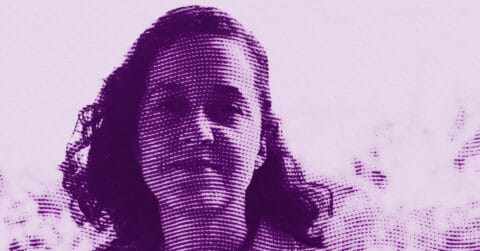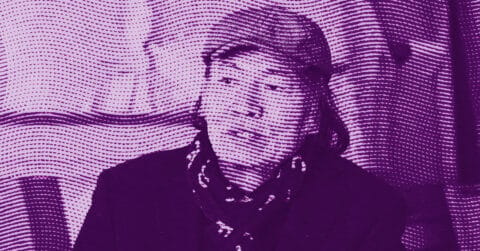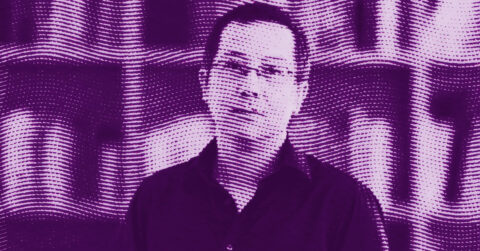Listen to me carefully, you bunch of snobs: if you are still looking in contemporary Philippine art for that postcolonial complacency that characterizes so many Asian painters trying to please Western galleries, move on. Jigger Cruz, born in 1984 in Malabon City, will offer you neither the comfort of exotic nostalgia nor the ease of a predictable rebellion. This painter, educated at Far Eastern University and apprentice to Manuel Ocampo, has established himself as one of the most relevant artists of his generation by practicing a form of iconoclasm worthy of serious attention.
Cruz’s practice essentially consists of covering classical paintings, copies of Flemish masters, Renaissance-style portraits, with thick layers of oil paint applied directly from the tube or through pastry bags. The result: tormented surfaces, layers of vivid colors that almost entirely obliterate the original image. This technique, which some might quickly label vandalism, actually reveals a sharp intelligence regarding the weight of history in contemporary artistic production. Cruz does not destroy for the anarchic pleasure of destruction; he constructs a visual discourse on the impossibility of escaping the Western canon while asserting the necessity of inscribing one’s own voice within it.
To understand the urgency of Cruz’s gesture, one must return to the colonial history of the Philippines and the tutelary figure of Juan Luna. This Filipino painter, trained in Europe at the end of the 19th century, embodies the paradox of the colonized artist: recognized by European institutions, crowned with success in Parisian salons, Luna nonetheless remains prisoner to a system of representation that is not his own. His painting “La vie parisienne” (1892), currently held at the National Museum of the Philippines, perfectly illustrates this ambivalence [1]. The work shows three Filipino men, Luna himself, José Rizal, and Ariston Bautista Lin, observing a courtesan in a Parisian café. These three intellectuals, major figures of the Philippine propaganda movement for independence, are depicted dressed in European fashion, adopting the visual codes of the imperial metropolis. The woman in the center, often interpreted as a metaphor for the Philippine “motherland,” remains passive, an object of the male and colonial gaze.
This painting epitomizes the dilemma of any artist from a formerly colonized territory: how to create when the very tools of creation, the oil painting, perspective, pictorial genres, belong to the colonizer? How to express oneself in a language that was neither designed for you nor by you? Luna chose brilliant assimilation, mastering European academic techniques to the point of surpassing many of his European contemporaries. But this success remains ambiguous, as it implies acceptance of the colonizer’s aesthetic criteria. Cruz, more than a century after Luna, offers a radically different answer. By covering these academic paintings with raw material, obliterating faces and classical landscapes under splashes of pure color, he rejects the debt. He does not seek to prove that a Filipino can paint as well as a European; he asserts that this very question no longer needs to be asked.
Cruz’s gesture belongs to what might be called an “aggressive archaeology” of painting. Each of his canvases preserves the trace of the original image, sometimes visible through transparency, sometimes completely buried. This pictorial stratigraphy functions as a metaphor for Philippine colonial history: Western references remain present, unavoidable, but no longer dictate the ultimate meaning of the work. The flamboyant colors Cruz overlays, garish pinks, acidic greens, and toxic yellows, create a new visual narrative that no longer awaits the center’s approval. This is not about a clean slate but a violent, assumed, and jubilant rewriting.
The artist himself acknowledges this implicit political dimension of his work. Asked about his practice, he states: “I’m simply trying to joke about all this, to connect with art history, but also to create a new scene and a new surface to observe it from another perspective” [2]. This “joke” should not be taken lightly. It reveals a subversion strategy that relies on humor and mockery rather than pure theoretical discourse. Cruz refuses to position himself as a victim of history; he becomes its playful manipulator, transforming the burden of the past into malleable material.
We must now address the second axis of reflection suggested by Cruz’s work: the philosophical question of creative destruction. Here, one cannot help but think of Friedrich Nietzsche and this striking formula from “The Genealogy of Morals”: “To build a temple, a temple must be destroyed” [3]. This statement perfectly summarizes the logic at work in Cruz’s practice. The German philosopher was not speaking of simple nihilistic iconoclasm but of an ontological necessity: all true creation requires the prior destruction of old values. One does not build on a void; one builds on ruins.
Cruz literally applies this principle to painting. His canvases are not pure abstractions sprung ex nihilo; they are violent testimonies where the old is simultaneously erased and maintained. This tension between presence and absence, destruction and construction, gives his work a conceptual density that distinguishes it from American abstract expressionism to which it might be too quickly linked. While a Jackson Pollock or Willem de Kooning sought to free painting from any external reference, Cruz deliberately maintains the reference beneath the surface. Western art history remains visible, but as a ghost, a specter that must constantly be conjured to move forward.
The Nietzschean dimension of this work goes beyond the simple metaphor of destruction. It touches on the question of value itself. What gives a painting value? Its technical skill? Its ability to faithfully reproduce reality? Its place in a recognized tradition? Cruz sweeps these criteria away with a flick of a socket wrench. By covering copies of Flemish masters, paintings already devoid of any originality since they are copies, he directly questions the notion of authenticity that underpins the Western art market. Does a copy covered with gestural paint become more authentic than the copy itself? Does Cruz’s iconoclastic gesture have more value than the skill of the copyist?
These questions are not mere intellectual games. They go to the heart of what it means to be an artist in a postcolonial context. The contemporary Filipino artist cannot pretend to ignore his country’s colonial history, nor can he claim to create in a cultural vacuum. But he must also not let himself be paralyzed by this history. Cruz’s solution is to fully assume the violence of his gesture: yes, he destroys; yes, he covers; yes, he erases. But precisely because he destroys consciously, methodically, he creates the conditions for true novelty.
The recent evolution of his practice confirms this interpretation. At Art Fair Philippines 2024, Cruz presented considerably pared-down works. Fewer layers, fewer colors, simplified geometric shapes. The artist explains: “I’ve moved past all that. I don’t need to please anyone… When you’re young, you have to be arrogant. But it was also right to go through that stage, that process of growth” [4]. This statement reveals an artistic maturity that does not abandon radicalism but shifts it. Cruz does not give up his deconstruction project; he now accomplishes it with more economy of means, which paradoxically strengthens its power.
Color, for Cruz, is particularly interesting. Colorblind, he perceives hues differently from most viewers. This physiological peculiarity becomes a strategic advantage: freed from chromatic conventions, he can juxtapose colors that the “normal” eye would judge discordant. His greens and purples, which he cannot distinguish, create unexpected visual tensions. This inability becomes an ability, transforming an assumed handicap into a stylistic signature. Once again, Cruz turns stigma into creative strength.
It is also necessary to mention the material, almost fetishistic, dimension of his approach. Cruz does not simply paint; he sculpts the paint, creating thick reliefs that overflow from the frame, invade the moldings, transform the painting into a three-dimensional object. This insistence on the raw materiality of the paint, its texture, weight, and physical presence, violently contrasts with the increasing dematerialization of contemporary art. At a time when digital art and NFTs claim to render painting on canvas obsolete, Cruz reaffirms the sensuality of pictorial material. His works smell, weigh, and build up texture. They resist photographic reproduction, demanding direct physical confrontation.
The trajectory of Cruz, from an ambitious young painter to a family man seeking simplicity and honesty, also illustrates an implicit critique of the myth of the tortured artist. Too often, the art market values suffering, anxiety, tragedy. Cruz, however, now claims a form of lightness, a regained innocence. Watching his daughter draw circles and triangles reminded him that creation can be joyful, spontaneous, free from theoretical burden. This evolution does not mean abandoning the critical dimension of his work, but rather a shift: the critique no longer passes through the demonstrative accumulation of layers of paint, but through the accuracy of the minimal gesture.
Jigger Cruz’s work forces us to rethink the relationships between center and periphery in globalized contemporary art. He rejects both complacent exoticism and mere imitation of Western models. His solution, to cover, obliterate and rebuild, is neither a harmonious synthesis nor a pure and simple rejection, but an act of transformation where colonial history becomes construction material rather than a paralyzing burden. The temples of Western art history are destroyed on his canvases, but their ruins form the foundations of new buildings. This dialectic of destruction and creation places Cruz at the heart of contemporary debates on cultural identity, postcoloniality, and artistic autonomy. His work proves that an artist can be deeply rooted in his national context while speaking a universal language, that he can assume the colonial heritage without submitting to it, and that he can methodically destroy to better build with freedom. In an era saturated with discourse on the decolonization of imaginaries, Cruz offers a plastic, material, and undeniably effective response: painting over, again and again, until the original image becomes illegible, until finally something irreducibly new emerges.
- Juan Luna, “La vie parisienne”, also known as “Interior of a Café,” 1892, oil on canvas, National Museum of Fine Arts, Manila, Philippines.
- Jigger Cruz, quoted in Quiet Lunch Magazine, 2018.
- Friedrich Nietzsche, “The Genealogy of Morals”, 1887.
- Jigger Cruz, quoted in The Nation Thailand, 2024.
















